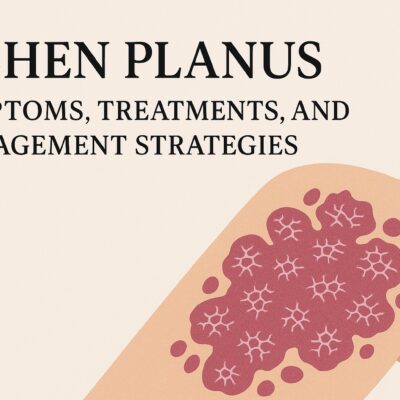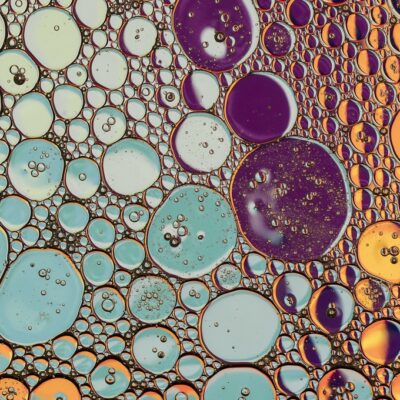Learn about important terms related to chronic wound management, including debridement, compression therapy, and negative pressure wound therapy in this comprehensive guide.
Introduction
Chronic wounds can be a significant health issue for patients, leading to pain, discomfort, and even serious complications. Proper management of these wounds is crucial to ensure effective healing and prevent the development of further complications. To understand chronic wound management better, it is essential to have a basic understanding of the important terms used in this field. In this article, we will explore some of the key terms that are commonly used in chronic wound management, providing readers with a comprehensive understanding of this important area of healthcare.
Chronic Wound Management: Important Terms to Know
Chronic wound management involves the use of various techniques and tools to promote healing and prevent complications in wounds that are not healing as expected. Here are some of the important terms to know in chronic wound management:
1. Debridement
Debridement is the process of removing dead, damaged, or infected tissue from a wound. This is a crucial step in wound healing, as it promotes the growth of new tissue and prevents the development of infections. There are several methods of debridement, including mechanical, enzymatic, autolytic, and surgical.
2. Exudate
Exudate is the fluid that seeps out of a wound during the healing process. This fluid can contain various substances, including blood, pus, and other fluids. Managing exudate is an important aspect of wound care, as excessive exudate can delay healing and increase the risk of infection.
3. Granulation Tissue
Granulation tissue is new tissue that forms in a wound during the healing process. This tissue is red or pink and has a bumpy texture. Granulation tissue is important for wound healing, as it helps to fill in the wound and promote healing.
4. Necrotic Tissue
Necrotic tissue is dead tissue that can accumulate in a wound. This tissue can delay healing and increase the risk of infection. Debridement is often necessary to remove necrotic tissue from a wound.
5. Negative Pressure Wound Therapy
Negative pressure wound therapy (NPWT) is a technique that involves applying suction to a wound to promote healing. This technique can help to remove excess fluid from the wound, increase blood flow, and promote the growth of new tissue.
6. Pressure Ulcer
A pressure ulcer, also known as a bed sore, is a wound that develops as a result of prolonged pressure on the skin. These wounds are common in patients who are bedridden or have limited mobility.
7. Hyperbaric Oxygen Therapy
Hyperbaric oxygen therapy (HBOT) is a technique that involves exposing a patient to 100% oxygen in a pressurized chamber. This technique can help to promote wound healing by increasing the oxygen levels in the body and promoting the growth of new tissue.
8. Biofilm
Biofilm is a community of microorganisms that can form on the surface of a wound. This can delay healing and increase the risk of infection. Biofilm management is an important aspect of chronic wound care.
9. Edema
Edema is the swelling that can occur around a wound. Managing edema is an important aspect of wound care, as excessive swelling can delay healing and increase the risk of infection.
10. Moisture-associated Skin Damage
Moisture-associated skin damage (MASD) is damage to the skin that occurs as a result of prolonged exposure to moisture. This can include damage to the skin around a wound, which can delay healing and increase the risk of infection.
11. Wound Bed Preparation
Wound bed preparation is the process of preparing a wound for healing. This includes removing any debris or necaprotic tissue, managing exudate, and addressing any other factors that may be delaying healing. Proper wound bed preparation is crucial for effective wound healing.
12. Compression Therapy
Compression therapy is a technique that involves applying pressure to a wound to promote healing. This technique is often used in patients with venous ulcers, as it can help to improve blood flow and reduce swelling.
13. Epithelialization
Epithelialization is the process by which new skin cells form and cover a wound. This is a crucial step in wound healing, as it helps to protect the wound from infection and promote the growth of new tissue.
14. Infection Control
Infection control is an important aspect of chronic wound management. Preventing infections is crucial for effective wound healing, as infections can delay healing and increase the risk of complications. Proper wound care, including cleaning the wound and using appropriate dressings, can help to prevent infections.
15. Moist Wound Healing
Moist wound healing is a technique that involves keeping a wound moist during the healing process. This can promote the growth of new tissue and prevent the development of scabs, which can delay healing.
16. Negative Pressure Wound Therapy Dressings
Negative pressure wound therapy dressings are specialized dressings that are used in conjunction with NPWT. These dressings help to create a seal around the wound, allowing the suction to be applied directly to the wound.
17. Periwound
The periwound is the skin surrounding a wound. Proper management of the periwound is important for effective wound healing, as damage to the periwound can delay healing and increase the risk of infection.
18. Sinus Tract
A sinus tract is a small tunnel that can develop under the skin around a wound. This can allow bacteria to enter the wound and delay healing. Managing sinus tracts is an important aspect of wound care.
19. Tissue Viability
Tissue viability is the ability of tissue to survive and function effectively. In the context of chronic wound management, tissue viability is an important factor to consider when evaluating the effectiveness of wound care techniques.
20. Venous Ulcer
A venous ulcer is a type of wound that develops as a result of poor circulation in the legs. These wounds are often located on the lower leg and can be difficult to heal.
FAQs
- What is the most important factor in chronic wound management? The most important factor in chronic wound management is preventing infection. Infections can delay healing and increase the risk of complications.
- What is the best way to prevent infections in chronic wounds? Proper wound care, including cleaning the wound and using appropriate dressings, is the best way to prevent infections in chronic wounds.
- What is debridement, and why is it important? Debridement is the process of removing dead, damaged, or infected tissue from a wound. This is important for promoting the growth of new tissue and preventing the development of infections.
- What is negative pressure wound therapy, and how does it work? Negative pressure wound therapy (NPWT) is a technique that involves applying suction to a wound to promote healing. This technique can help to remove excess fluid from the wound, increase blood flow, and promote the growth of new tissue.
- How long does it take for a chronic wound to heal? The time it takes for a chronic wound to heal can vary depending on several factors, including the size and location of the wound, the patient’s overall health, and the effectiveness of the wound care techniques being used.
- What can I do to promote faster healing of a chronic wound? Proper wound care, including cleaning the wound regularly, using appropriate dressings, and managing any underlying medical conditions, can help to promote faster healing of chronic wounds. It is also important to follow any instructions provided by your healthcare provider and to attend all scheduled appointments to monitor the progress of the wound.
Conclusion
Chronic wound management is a complex and multifaceted process that requires a thorough understanding of the underlying factors that can contribute to delayed healing. Proper wound care techniques, such as debridement, compression therapy, and negative pressure wound therapy, can help to promote healing and prevent the development of infections and other complications.
It is important for healthcare providers and patients to work together to develop a comprehensive plan for chronic wound management that addresses all of the factors that may be contributing to delayed healing. By working together and implementing evidence-based wound care techniques, it is possible to improve outcomes and promote faster healing of chronic wounds.
If you or a loved one is struggling with chronic wound management, it is important to seek guidance from a healthcare provider who specializes in wound care. With the right care and support, it is possible to achieve better outcomes and improve quality of life.






No Comment! Be the first one.